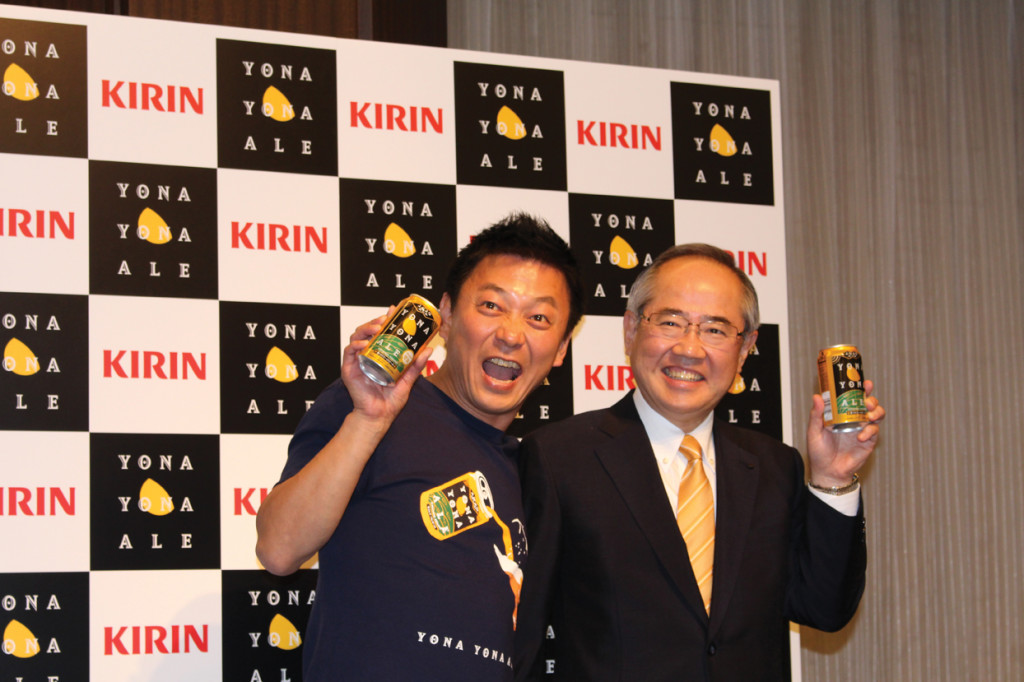Independent
Yo-Ho Brewing, maker of Yona Yona, is not craft beer. Well, that’s true if we use the BA’s definition of independent: “Less than 25 percent of the craft brewery is owned or controlled (or equivalent economic interest) by an alcoholic beverage industry member that is not itself a craft brewer.” Of course, this isn’t America and everyone in Japan considers Yo-Ho a craft brewery. They are one of the most popular and can certainly take a large amount of credit for spreading ‘craft beer’ in Japan. So why even bring up the BA’s definition? The BA has made it clear that it does not seek to define craft beer for other cultures. And there are dozens of other cultures with craft beer movements that have their own unique set of circumstances. The BA’s definition does highlight an issue that will perhaps question the identity of Japan’s craft beer industry significantly in the coming months and years: ownership.
As Kirin enters the game, so will the other big breweries. They will either launch their own “craft” brands or try to take a stake in a craft brewery. If taking a stake or outright ownership, what’s acceptable? And acceptable to whom? Is Kirin’s 30%-plus stake in Yo-Ho acceptable to fans that have followed them believing they are a craft brewer?
Maybe the majority of Yo-Ho’s fans don’t seem to mind because Kirin hasn’t actively tried to crush the craft beer industry. This contrasts sharply with the experiences of many craft brewers in America in dealing with large breweries in the past, and explains the BAs caution with ownership. Maybe, too, Yo-Ho’s fans don’t care at all whether it’s craft; they just like it because it’s Yo-Ho and they identify with the brand.
There’s neither an industry nor a consumer group in Japan that defines craft beer by ownership. Ownership of what people think of as craft breweries in Japan includes some of the most disparate entities you’ll see anywhere. A large number of sake breweries branched into craft beer, which is easy enough to understand. Some breweries are agricultural outfits. A handful, like Yo-Ho, are tied to resort companies. Others are owned by holding companies with an eclectic range of interests. Then you have some linked with town tourism organizations. A few–like highway rest stops–seem downright weird. Actual brewer-owners are the minority, though their numbers have grown in recent years with a new wave of openings. This is a very promising trend and speaks volumes to the original idea of “craft.”
It generally seems the breweries in Japan that are most successful, in terms of both quality and business, are run by brewer-owners or at least owners that are very involved in the day-to-day operations. Barring that, the hired brewers take a central, visible role in the company’s public activity, and are not just nameless back-room employees with no freedom and who answer to an equally nameless management team. All these individuals seem to embrace the lifestyle: working hard to create quality beers they’ve designed; traveling to events regularly to serve the beers, meet customers and fraternize with industry colleagues; repeating year after year. It goes beyond quality and financial concern.
“Beers with ingredients of uncompromising quality brewed on a small scale by individuals that are dedicating their lives to this craft.” My definition may fall short or be too vague. Ultimately those in Japan that think of themselves as craft brewers should collectively and democratically define who they are and what they make. Maybe their definition of craft beer and/or craft brewer will accommodate Spring Valley and other small breweries that open as subsidiaries of the large breweries.
These small brewers have spent twenty very challenging years building craft beer in Japan into an exciting phenomenon that is attracting a growing segment of the public. They earned this. They shouldn’t let others define it (or appropriate it). Certainly not large brewers and certainly not media–this magazine included. If neglected, we can expect “craft beer” labels slapped on every marginal beer of unknown provenance that floods the market.
Maybe it won’t matter. Good breweries will connect with their core consumers regardless, won’t they? Meanwhile, some influential craft beer personalities in America, when pressed for a definition, say craft beer is in the imagination of the consumer anyway.
Yes, “craft beer” is in the imagination of the consumer, but it’s not as if everyone just makes up what it is. Many people that are consciously buying into something because it is craft are giving their approval to a kind of code. They want that code defined by the brewers and brewery owners that supposedly follow it.
In this respect, craft beer is at the very least craft beer in that it has a code. We should all know by now that this code is about more than simply making money. Let’s hope that making good beer is still its core value. Otherwise, brewers shouldn’t even bother using the word “craft”. That would be crafty.
This is the first part of a two-part series on the meaning of craft beer by Japan Beer Times publisher Ry Beville. He looks forward to drinking Spring Valley’s beers. This is not an endorsement of Kirin/Spring Valley. He believes they deserve a chance to prove what good things they can do for beer.
This article was published in Japan Beer Times # () and is among the limited content available online. Order your copy through our online shop or download the digital version from the iTunes store to access the full contents of this issue.




